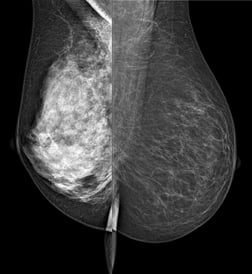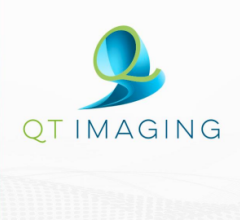
August 7, 2012 — A new type of mammography could accurately measure breast density, one of the most significant risk factors for breast cancer, suggested early research presented at the 2012 American Association of Physicists in Medicine (AAPM) annual meeting. Spectral mammography could also reduce the radiation dose of mammography by up to half.
Studies have shown the denser a woman’s breasts, the higher her risk for breast cancer. A woman with extremely dense breasts has up to four times the risk of breast cancer as a woman with fattier breasts, but standard mammography faces major challenges in accurately measuring breast density.
“Spectral mammography vs. standard mammography is like comparing color television to black and white TV,” said Sabee Molloi, Ph.D., professor and vice chairman of research for the department of radiological sciences, University of California, Irvine. “Although the object represented is the same, the color image has more information inside. Spectral mammography allows the image to be viewed at two different energy levels, instead of just one, helping quantify the density of a woman’s breasts and, in turn, her relative risk.”
Less dense breasts are fattier, while denser breasts have more connective tissue. In addition to being a risk factor for breast cancer, denser breasts are more difficult to “read” on a mammogram because tumors are harder to see.
If validated by other studies and approved by the U.S. Food and Drug Administration (FDA), spectral mammography could become the standard of care for screening mammograms and guide how often a woman should undergo mammography, or whether she needs further testing. A woman with denser breasts might benefit from having regular screening mammograms more frequently, or at a younger age. Women with extremely dense breasts, a family history of cancer,and genetic predisposition to cancer might benefit from having a more sensitive test, such as magnetic resonance imaging (MRI).
Researchers used spectral mammography to image four models of breasts, representing different thicknesses. The results suggest spectral mammography could measure volumetric breast density in a screening exam with an error of less than 2 percent. This could offer a major advance in the ability to identify women at higher risk of breast cancer earlier in the screening process. Researchers are planning a study to test spectral mammography in pilot studies of women as part of regular screening.
In addition to Molloi, the leading researchers in the group and co-authors of the paper presented were Huanjun Ding and Justin Ducote.
For more information: www.aapm.org


 December 04, 2025
December 04, 2025 








